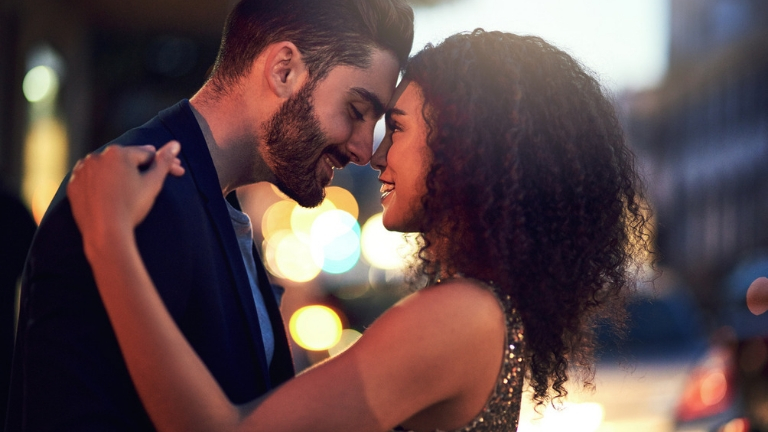‘He’s definitely my type on paper’ – ah Love Island is back and so is this well-known phrase. Ever wondered why you are attracted to a certain type? Psychologist and author, Audrey Tang, explains the psychological laws of attraction
Who else watched Love Island last night? And who was gobsmacked over Anton’s comment to Anna Vakili? Apparently many fans of the summer show were also up in arms over Anton’s dig towards fellow islander Anna.
If you didn’t watch it, here’s the low down: Scottish gym owner, Anton Danyluk 24, dug himself a hole on Wednesday night’s episode telling Anna that she was nice on the inside and had a nice personality but that Molly-Mae Hague was his ‘type on paper’ – there’s that phrase again.
Anna 28, didn’t know whether to take offence to this comment, and felt as though Anton was basically saying he didn’t find her looks attractive.
https://www.instagram.com/p/Byn2ct5pWIB/
But apparently, although maybe not put in Anton’s words, we humans do in fact have a type….on paper – sorry I couldn’t help myself.
A new study published in Proceedings of the National Academy of Sciences has found that where romantic relationships are concerned, people do indeed have a type and that despite best intentions to date outside of that type, most will still gravitate to similar partners.
Using data from an ongoing multi-year study on couples and families across several age groups, researchers found that people often look for love with the same type of person over and over again, showing a strong tendency to continue to date a similar personality
But WHY do we have a ‘type?
Psychologist and author, Audrey Tang, explains the psychological laws of attraction.
My first husband was very similar to me – we went to the same university, we had the same interests (we met at ballroom dancing), we both became teachers – although we have now diverged from that career, and we shared a similar circle of friends, and everyone thought we seemed well suited. Our marriage lasted five years.
I’ve been with my current husband for 11 years now, we have a 13.5 years age gap between us (in his favour) and vastly different careers. He is a design and development engineer, I am an author and psychologist. We don’t always see each others’ friends and everyone had a concern over us getting together.
But when we finally got married (after 10 years together), everyone knew we’d be in it for the long term. Perhaps you’d better check back with me next year, to see how it’s going, but I’m sure the odds are on our side, even if the research is not.
Psychological research has long since sought to explain what attracts us to others, and while you may subscribe to some theories and not others, knowing about them may still give us insights into why we might (despite being in a happy relationship of our individual choosing) may be inexplicably attracted to someone else…although we may or may not choose to act on it.
The evolutionary hangover
Although antiquated, when humans were concerned with ‘hunter gathering’ and the propagation of the species, power and nurture were the archetypical desirable qualities in males and females respectively. The traits of strength such as broad shoulders and sturdy legs were attributed to the male “Y” shape physique. Similarly, when the role of the female was largely childbearing, the ‘hourglass’ shape was prized – wide hips to carry children and ample breasts to feed them.
These looks are still appreciated by many today, but society has changed. So, if an unconscious desire for power and nurture is still a driving force for choosing a mate, you might also seek for the traits of intelligence, compassion and healing, or even innovation as they have the propensity to generate money (from which power and nurture can now be bought.)
3 psychological laws of attraction
Social psychology research suggests a few other reasons why we may be attracted to someone:
1. Exposure
In psychological terms, this merely refers to how often you see someone. Exposure does not need to include interaction, it can happen from afar, for example, through the media. Participants tended to rate people they recognised more attractive than people they did not.
2. Proximity
Unlike exposure, physical proximity, that is, existing in a similar radius of each other, is the key here. College students living in the same halls of residence were more likely to form friendships and relationships. This makes practical sense – not only are you experiencing a similar surrounding environment, but you have more opportunity to interact with each other as well.
3. The ‘Matching Hypothesis’.
“She’s a perfect 10” sang Beautiful South, but if you perceived yourself as a five, the chances are you won’t be knocking on her door. Participants who were asked to rate one half of a couple for attractiveness, often paired them with another person whom they had given a similar rating.
Similarly, when participants were given an arbitrary rating for attractiveness and randomly matched with another person (although they were told their ratings matched), significantly more people who knew they had higher ratings judged their attractiveness level of their “match” more harshly.
This suggests that we might have an unconscious “rating” system of who we feel we’d match with based on looks.
However, within the same piece of research, ratings for attractiveness were less important when participants had a chance to get to know each other first.
While physical attraction is often the first thing we notice when considering the pursuit of a romantic partner, situation can also play a role in what we deem attractive – and sometimes archaic or gender stereotyped behaviour still wins through.
A woman reacting fearfully while watching a horror was rated as more attractive by their date compared with one who did not; and a man who responded in a brave manner while watching was similarly rewarded.
What is most notable though, aside from the contrived scenarios of the research, this is largely focused on heterosexual relationships. Previous research has not tended to consider the LGBT community, cross-cultural or interracial couples, nor age-gap relationships (my husband and I fill at least two of those categories). Therefore, while the information is interesting, it is also sadly lacking.
The world is also changing in other ways. For example, with the growth of project based work, families often have to move, or spend time apart which means that people who can emotionally manage a long-distance relationship may be more successful.
We now have almost unlimited access to everything and everyone via travel or social media, which means our options are as open and possibly as fleeting. Further, a growing positive focus on loving oneself, guides us to seek love and validation foremostly from within.
As such, while there may be psychologically researched reasons why someone may catch our eye, all the research is no substitute for knowing what you look for in a mate, and how you would most like to contribute to and blossom within that relationship…and giving it a go.
Credit: Dr Audrey Tang is a Chartered Psychologist and the author of The Leader’s Guide to Mindfulness, published by FT Publishing, priced £14.99.
More Healthista Content
This luxe couple’s retreat in Ibiza delivers winter sun at a reasonable price
How to spot a sexual predator – the 8 characteristics
Boost energy naturally with these 5 easy life hacks
Like this article? Sign up to our newsletter to get more articles like this delivered straight to your inbox.
























































